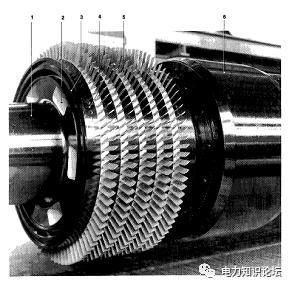From the analysis of the two intuitive states of no-load and load, it can basically be considered that under the load state of the motor, due to the fact that it drags the load, it will correspond to a larger current, that is, the load current of the motor will be greater than the no-load current; but this The situation is not applicable to all motors, that is, some motors have a no-load current greater than their load current.
There are two electrical functions of the stator part of the asynchronous motor: one is to input electric energy, and the other is to establish the rotating magnetic field of the motor.
In the no-load state of the motor, the current component is mainly the excitation current, and the active current corresponding to the no-load loss is relatively small. That is, the input electric energy is small at no-load, and the stator current is mainly used to establish a magnetic field.
In the load state, more power needs to be input to drive the load. Generally, the current component is mainly the load current, so the load current is usually greater than the no-load current, and the no-load current is only 1/4 to 1/2 of the load current. between.
The electromechanical energy conversion inside the motor is a very complicated process. The establishment of the magnetic field as the only medium for electromechanical conversion involves various factors, which leads to the fact that the no-load current of some special designs or types of motors is greater than the load current.
For a three-phase asynchronous motor, the three-phase windings are symmetrically distributed in space, and the input three-phase current is symmetrical. Than have a certain regularity. However, for some specially designed motors, such as a single-winding pole-changing multi-speed motor with a certain speed or number of poles, the leakage reactance or leakage flux is very large, and the leakage reactance voltage drop caused by the load current is large, resulting in the saturation level of the magnetic circuit under load. Much lower than no-load, the load excitation current is much smaller than the no-load excitation current, resulting in no-load current greater than the load current.
The magnetic field of a single-phase motor is an elliptical magnetic field, and the ellipticity is different between no-load and load, and often has a large difference. Usually, the stator of a single-phase asynchronous motor has two sets of main and auxiliary windings, and their axes often differ by 90° in space. The auxiliary winding is connected to the power grid in parallel with the main winding after a suitable capacitor is connected in series. Due to the phase splitting effect of components such as capacitors, the current of the main winding and the auxiliary winding differ by a phase angle in time, and the pulse vibration magnetic potential generated by the main winding and the auxiliary winding respectively can be synthesized into a rotating magnetic potential, and the induced current in the rotor is established. The magnetic field is induced, and the two magnetic fields interact to generate the drag torque of the motor. Theoretical analysis proves that the elliptical synthetic rotating magnetic potential of single-phase motor can be decomposed into two circular rotating magnetic potentials of positive sequence and negative sequence. Action, so that the size of the drag torque is greatly affected.
When the spatial distribution of the main and auxiliary windings and the time phase difference of the current flowing are both 90 degrees electrical angle, the ellipticity of the synthetic magnetic field is the smallest; if the magnitude of the magnetic potential of the main and auxiliary windings is the same, the case of the smallest ellipticity of the synthetic magnetic field is transformed into a circular shape Rotating magnetic field, that is, the motor only has the magnetic potential of positive rotation, the negative sequence component is zero, and the performance index is also optimal. Because split-phase components such as capacitors achieve different levels of current phase offset at different speeds, there is no absolute proportional relationship between the no-load current and the load current of a single-phase motor. Some load currents are greater than no-load currents, and some no-load currents will be greater than the load current.
Post time: Apr-06-2023

